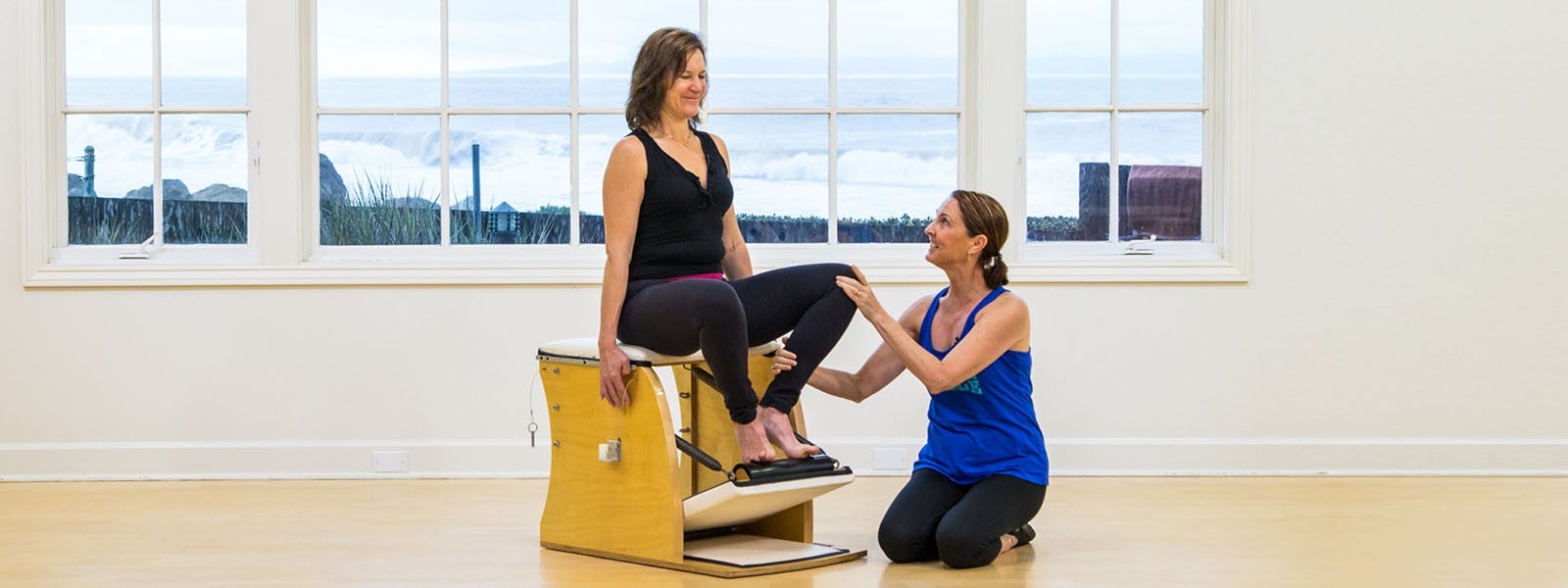
Pilates for Healthy Knees
The knee joint is the largest and one of the most complex joints in the body. As such it is also one of the most commonly injured joints. Bones, cartilage, and tendons all work in concert for optimal knee function allowing you to bend your leg. Due to the number of moving parts in this joint, it is prone to multiple types of injuries.
The most common types of knee injuries include:
- Knee Fractures: The patella or knee cap protects the sensitive parts within your knee joint. It’s also the first part to make contact with the ground during a fall.
- Knee Dislocation: When the bones of the knee joint come out of place, a dislocation of the knee cap can occur. This can happen when there is a significant impact to the knee such as from a fall, a collision, or a car accident.
- Knee Ligament Injuries: This type of knee injury is very common in sports. All the ligaments in the knee serve to keep the knee in place. When the knee is extended or moved in a way it shouldn’t naturally move, the ligaments can stretch or tear.
- Meniscus Tear: This is a very common type of sports injury that can result from explosive and jumping actions that include twisting or quick changes of direction such as in football, basketball, or soccer. The meniscus can also wear out over time.
- Knee Tendon Tear: This injury is common in just about everyone, but occurs most often in middle-aged people participating in sports involving running and jumping.
How can Pilates help with knee injuries or pain?
The Pilates Method, while not physical therapy, is a brilliantly supportive and therapeutic system. In my experience as a Pilates instructor who is not a PT, I have seen students who have recovered from a knee injury or surgery use their Pilates workout to ensure proper health, maintenance, and longevity of their entire body, including the knees.
“Muscles need to be balanced for good knee alignment,” says Christine Siegel, a Pilates instructor in San Diego, California, and also a Physical Therapist for 39 years, “so I don’t just focus on the knee, it is the whole body.”
What about knee pain not resulting from any trauma?
Perhaps, like many of us, you’ve experienced knee discomfort or pain unrelated to any pathology. Barring any trauma, knee pain can often indicate an imbalance or misalignment elsewhere in the body, either northward in the hip joint or down at the ankle or foot.
Oftentimes knee discomfort can come from tension (for example, chronic locked knees) or misalignment. This is where your Pilates exercises will work their magic. Whether you’ve recovered from an injury or you’re looking to keep all your joints working optimally over your lifetime, the Pilates method can reinforce healthy movement patterns to benefit your knees.
Siegel credits the Pilates Method as an excellent way to maintain healthy knees over time, even those that have been repaired years before. “Pilates is the best type of exercise because it is full-body and that’s how we move,” she says.
Siegel sees many knees that are imperiled by other factors in the body such as a weak hip or misaligned foot. “For most of my people, the knee is the symptom (or the victim) not the cause,” she says.
For a repaired knee injury, the surgery or physical therapy that follows the trauma is not the end of the story. Pilates exercises can help to maintain the health of the knee by addressing movement patterns that can contribute over time to wear and tear in the knee joint.
My friend and colleague Leslie Linton, a Pilates instructor in San Diego, California, underwent double knee replacement surgery in February of 2018. A patella injury precipitated the injury to her knees. Over time, the compensations that resulted from the injury to her kneecap became bad movement habits.
“Pilates helps to heal the habits that got your knees messed up in the first place,” she says.
Pilates helped Linton regain more strength and flexibility of the knee joint. “There’s no question,” Linton says, “Pilates has helped me. It is really a system for the health of the whole body. When you have a good connection to your center, the rest of your body creates a support system for the knees.”
What Pilates exercises can help to improve knee function?
Fundamental exercises in the Pilates system can be the true heroes for recovering knees. The use of springs assisting the flexing and extending of knees is especially beneficial for knee health.
Non-weight bearing exercises such as Leg Springs on the Cadillac or Footwork on the Reformer encourage flexion and allow the hip to sit in the socket in a balanced manner.
The focus on proper alignment in the above exercises as well as Seated Pumping on the High Chair can strengthen all the muscles of the leg to support the knee joint. (Note that weight-bearing exercises that include full flexion may need to be avoided for some individuals.)
I use my own Pilates workout to improve the alignment of my left leg, which needs special attention. My knee likes to give me feedback if it works too much and is disconnected from my center. More good news for happy knees: working on the proper alignment of your joints can be addressed in every Pilates exercise.
What’s your favorite way to use Pilates to keep your knees healthy and happy? Tell us in the comments below.
Comments
No comments yet. Be the first!

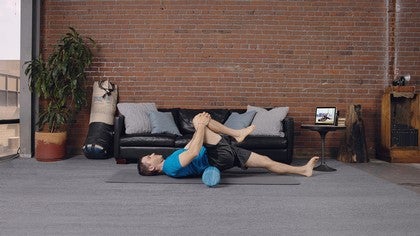

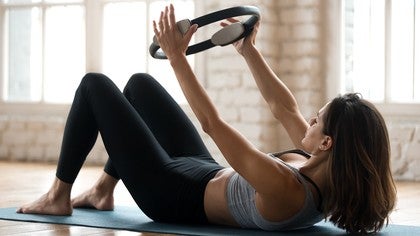
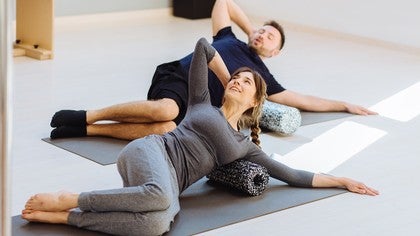
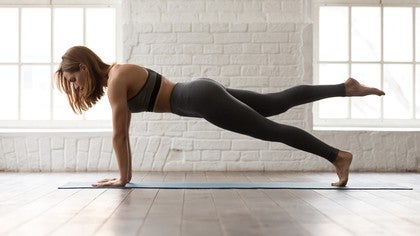

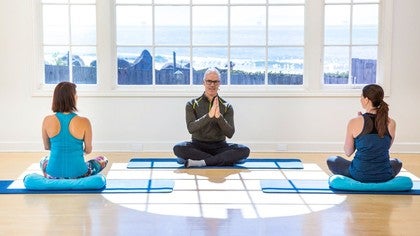

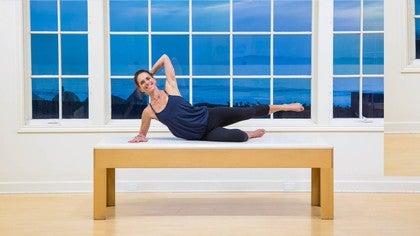
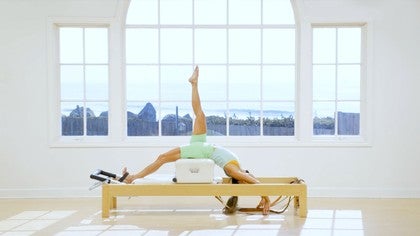


You need to be a subscriber to post a comment.
Please Log In or Create an Account to start your free trial.